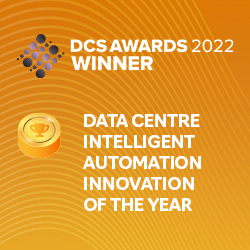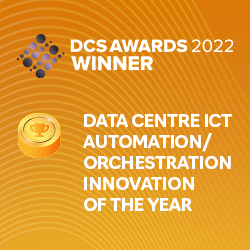USE CASES
SMART OFFICES
Modern workplace needs holistic management
what are smart offices?
A smart office is a workplace equipped with technologies that automate and streamline office operations. Like our product XpedITe, it uses the Internet of Things (IoT) devices, sensors, and advanced software applications to manage and monitor integrated systems for lighting, heating, air conditioning, security, and energy management.
what are the challenges faced by smart offices?
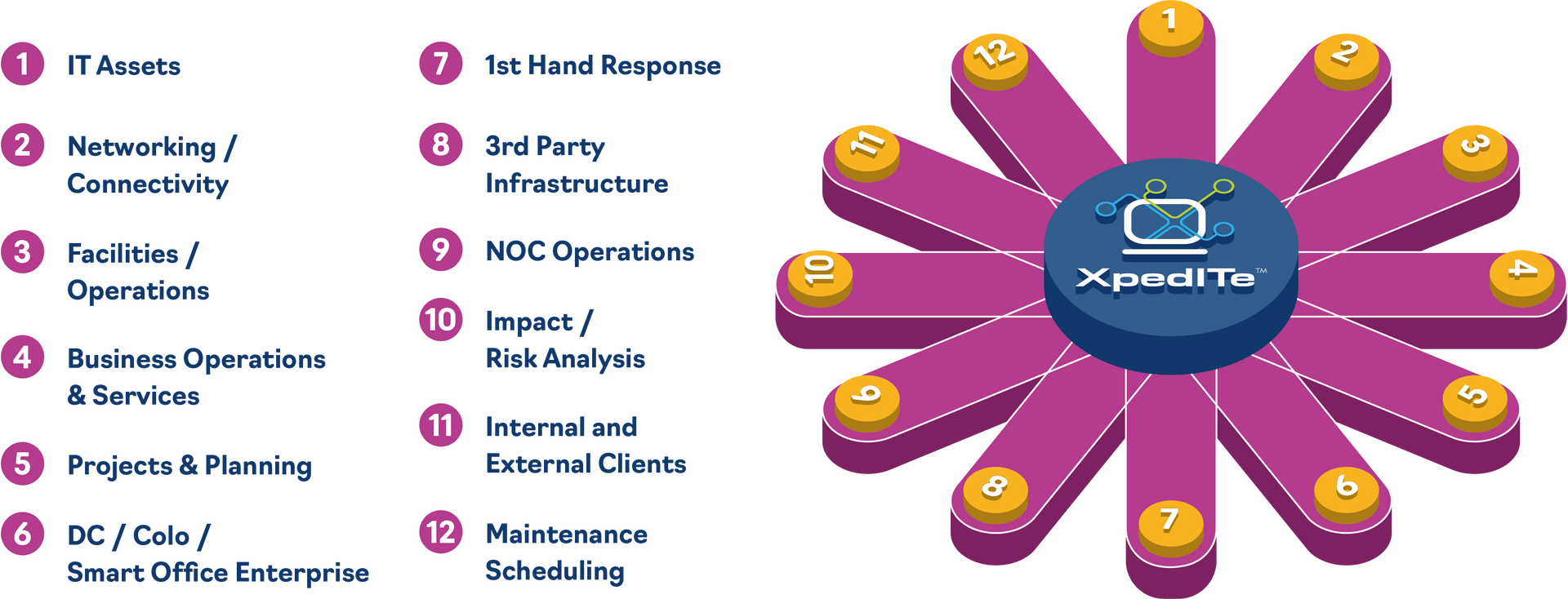
Holistic visibility of all of the equipment and systems from a single system that provides a consistent and accurate database of all assets and connectivity dependencies, having a clear understanding on utilization and performance of all devices and systems.
Facility and IT teams are often working in silo's and using distributed management systems to perform their duties and keep services online. Thus, bringing a lack of coordination, presenting a requirement for manual tasks and introducing inefficiencies with planning and management of reactive and proactive maintenance activities.
Planning power and data requirements for staff workstations and new spaces is time-consuming and involves conducting a physical audit or manual processes which are exposed to inaccurate records and human error, resulting in project delays and unexpected costs.
The increased number of network ports available in the office space introduces a higher risk of cybersecurity incidents that need to be monitored and managed. Managers of smart offices face challenges with ensuring network access ports are securely managed and not exposed to malicious attacks, mitigating the risks with unauthorized devices to being connected to the network.
There once was a time when people would watch science fiction movies and imagine how smart it would be to communicate over video or using fingerprints or voice to control devices, having the ability to automate simple tasks like turning the lights on or off and setting mood lighting for different times of the day.
Advancements in technology over the past decades has enabled the traditional workplace physical working environment to become high-tech workplaces known as the smart office which use artificial intelligence and automation to transform the way people work and conduct business.
Smart Offices have adopted technology solutions to create a productive and comfortable working environment that enables their workforce to work smarter, be better and happier in general. This ‘Smartness’ depends on a multitude of interconnected and ICT assets which need deployment and management. Achieving this management and inventory accuracy across multiple remote sites and in particular making sure that dark sites set aside for disaster recovery scenarios is a complex resource intensive task.
The smart technologies installed in offices are carefully chosen by company stakeholders, building owners and investors, facility managers and operators, tenants, architects and planners. Solutions implemented are to help achieve goals and providing the company with an environment for greater staff wellbeing, more connectivity, increased agility, and improved sustainability.
The multitude of intelligent tools and smart devices deployed in the smart office consists of communication equipment (ICT), sensors, cameras, personal computers, screens, lights, audio and visual equipment, building services and automation systems. These all need to be monitored and managed by different teams and specialist skillsets introducing complexities with management.
SMART OFFICES: bridging
the gaps
XpedITe offers the ability to orchestrate services by monitoring and management of all assets across distributed systems in a single unified platform that has unlimited bidirectional integration capabilities to automate processes across business units and disparate systems.
XpedITe brings together the ICT and facility teams to work in harmony and achieve common goals for service availability and resource utilization by providing a holistic visualization of all workspaces and the digital equipment. This means teams can make accurate decisions quickly and efficiently.
Teams can collaboratively manage resources when planning office Installation, Moves, Adds and Changes (IMAC), eliminating, the need to conduct physical audits and incurring unnecessary costs with underutilization of existing infrastructure.
WHAT ARE THE CHALLENGES FACED BY SMART OFFICES?

Holistic visibility of all of the equipment and systems from a single system that provides a consistent and accurate database of all assets and connectivity dependencies, having a clear understanding on utilization and performance of all devices and systems.
Facility and IT teams are often working in silo's and using distributed management systems to perform their duties and keep services online. Thus, bringing a lack of coordination, presenting a requirement for manual tasks and introducing inefficiencies with planning and management of reactive and proactive maintenance activities.
Planning power and data requirements for staff workstations and new spaces is time-consuming and involves conducting a physical audit or manual processes which are exposed to inaccurate records and human error, resulting in project delays and unexpected costs.
The increased number of network ports available in the office space introduces a higher risk of cybersecurity incidents that need to be monitored and managed. Managers of smart offices face challenges with ensuring network access ports are securely managed and not exposed to malicious attacks, mitigating the risks with unauthorized devices to being connected to the network.
There once was a time when people would watch science fiction movies and imagine how smart it would be to communicate over video or using fingerprints or voice to control devices, having the ability to automate simple tasks like turning the lights on or off and setting mood lighting for different times of the day.
Advancements in technology over the past decades has enabled the traditional workplace physical working environment to become high-tech workplaces known as the smart office which use artificial intelligence and automation to transform the way people work and conduct business.
Smart Offices have adopted technology solutions to create a productive and comfortable working environment that enables their workforce to work smarter, be better and happier in general. This ‘Smartness’ depends on a multitude of interconnected and ICT assets which need deployment and management. Achieving this management and inventory accuracy across multiple remote sites and in particular making sure that dark sites set aside for disaster recovery scenarios is a complex resource intensive task.
The smart technologies installed in offices are carefully chosen by company stakeholders, building owners and investors, facility managers and operators, tenants, architects and planners. Solutions implemented are to help achieve goals and providing the company with an environment for greater staff wellbeing, more connectivity, increased agility, and improved sustainability.
The multitude of intelligent tools and smart devices deployed in the smart office consists of communication equipment (ICT), sensors, cameras, personal computers, screens, lights, audio and visual equipment, building services and automation systems. These all need to be monitored and managed by different teams and specialist skillsets introducing complexities with management.
SMART OFFICES: BRIDGING THE GAPS
XpedITe offers the ability to orchestrate services by monitoring and management of all assets across distributed systems in a single unified platform that has unlimited bidirectional integration capabilities to automate processes across business units and disparate systems.
XpedITe brings together the ICT and facility teams to work in harmony and achieve common goals for service availability and resource utilization by providing a holistic visualization of all workspaces and the digital equipment. This means teams can make accurate decisions quickly and efficiently.
Teams can collaboratively manage resources when planning office Installation, Moves, Adds and Changes (IMAC), eliminating, the need to conduct physical audits and incurring unnecessary costs with underutilization of existing infrastructure.

BEJING SUBWAY
“The value that RiT Tech and their DCIM software, XpedITe has brought to our operations is not only top-level technology and high quality products but the most important achievement is the impact it has had on our day-to-day provisioning and work orders. Through the software, we can design and simulate all connectivity tasks that are integrated with our intelligent hardware - avoiding human error and making our operations safe and efficient.”
- Ms. Zhao, Chief Technical Officer, Beijing Metro Network Control Center
KEY FEATURES
DATA CENTEr INFRASTRUCTURE
MANAGEMENT (DCIM)
Through Integration, Automation and Transparency, XpedITe helps to reduce costs and run operations more efficiently. In order to help you Data Center achieve maximum uptime.
ASSET MANAGEMENT
Offering an Accurate and Comprehensive View of All Data Center Assets
Asset management is one of the critical DCIM pillars providing a reliable digital representation for infrastructure, as well as end-to-end change and service management functionality.
Capacity
Planning
Including Trending and Prediction
XpedITe gathers, processes and analyzes data from the building and IT infrastructure and all inter-dependencies to offer a comprehensive multi-layer capacity utilization displayed in 2D or 3D visual layers, capacity dashboards and reports for intuitive and comprehensive capacity management.
Rapid
Provisioning
Reducing Time to Market and Resource Overhead
Create, assign and audit all provisioning and maintenance tasks within a unified tool using XpedITe and integrate with external ticketing systems to manage changes in an effective way with reduced resource overhead and timeframes.
Intelligent Management
More than Simply Monitoring and Alerting
Through automation and machine learning, our tool turns information into solutions, enabling operators to make informed decisions that boost the bottom line: enhancing availability, streamlining consumption and optimizing reliability and productivity overall.
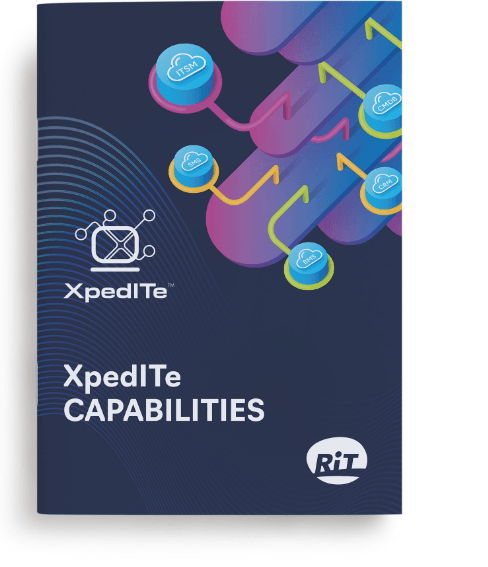
find out more
in our helpful capabilities guide
XpedITe is the only data center infrastructure management system (DCIM) on the market which gives our clients a solution that connects infrastructure and network in one platform. Our multi award-winning XpedITe provides the integration capabilities needed to enable universal intelligent infrastructure management (UIIM). XpedITe is used by progressive data centers across the globe from colocation to enterprises, including large corporations, government agencies, financial institutions, airport authorities, healthcare organizations, educational facilities and telecommunications.
XpedITe Awards
Seeing is believing, XpedITe is getting the recognition it deserves across the industry.
REQUEST A DEMO
We will get back to you as soon as possible.
Please try again later.
About RiT Tech
RiT Tech is a leading provider of converged IT infrastructure management and connectivity solutions. Read more
20 Atir Yeda, Kfar Saba, Israel
HQ Phone: +972-77-270-7270
Spain & Portugal: +34-644-310-619
Fax: +972-3-647-4115
© Copyright RiT Tech (Intelligence Solutions) Ltd. 2023. Company No. 515565216.
Cookie Policy |
Privacy Policy
power by kidumplus

